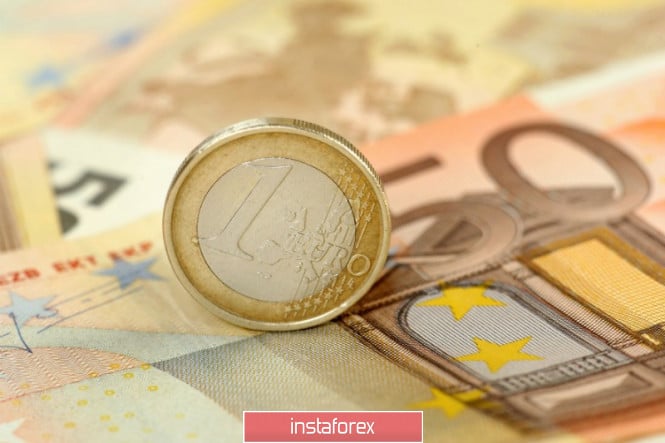
Last week, the EUR/USD pair was a step away from updating its annual low and found a local trough at 1.1065.
A decrease in the consumer sentiment index from the University of Michigan to its lowest level over the past seven months somewhat cooled the outburst of the "bears" in EUR/USD. However, this did not force them to abandon their plans.
The weakness of the European economy, the focus of the European Central Bank (ECB) on easing monetary policy, as well as increasing political risks in the region make the euro currency vulnerable. You should not be surprised then at the increase in the chances of its decline by the end of this month to $1.1. A week ago, the derivatives market estimated the likelihood of such a scenario to be realized at more than 16%, while now these chances are 49%.
Obviously, the policy of American protectionism has a more devastating effect on China and the eurozone than on the United States. This is evidenced by the fact that an industry from the eurozone had plummet into an abyss, and the fall of 0.1% of German GDP in the second quarter. Bloomberg analysts predict a further decline in German purchasing managers' indices in August, which increases the risks of a technical recession in the largest currency bloc economy. The divergence of economic growth between the EU and the US is well traced in the dynamics of such an indicator as the index of economic surprises. This fact does not allow the bulls to sleep peacefully for the euro.
If last year investors still had hope that the eurozone would get on its feet and begin to accelerate, then this year it seems that they will be disappointed. The United States still looks like an island of stability in the ocean of world recession.
The "bearish" factor for the euro is also the deterioration of the political landscape in the EU. In Italy, a split in the ruling coalition allowed the country's deputy prime minister, Matteo Salvini, to initiate a motion of no confidence in the head of government, Giuseppe Conte. Early Parliamentary elections loomed on the horizon, and the flight of investors from the Italian debt market was reflected in the increase in the differential yield of local and German government bonds.
On the contrary, the greenback is doing well. Of course, the USD index rally complicates the life of US exporters and helps reduce corporate profits, but this is an objective process. When rates on government bonds in the United States are higher than in other countries, and the US economy looks better, the dollar, it would seem, is doomed to strengthen. However, there is a fly in the ointment - US President Donald Trump's dissatisfaction with the Fed's actions and, as a result, a possible reduction in the rate of federal funds by the end of this year from 2.25% to 1.75%.
However, it is unlikely that the Chairman of the Federal Reserve, Jerome Powell in Jackson Hole, will want to signal a cut in interest rates by 50 basis points at once in September. As for the minutes of the July meeting, it can show the arguments of dissenters who opposed for the FOMC members to ease monetary policy. It is assumed that this will support the EUR/USD bears. In such conditions, the continuation of the fall of the main currency pair seems quite logical.
The material has been provided by InstaForex Company - www.instaforex.com